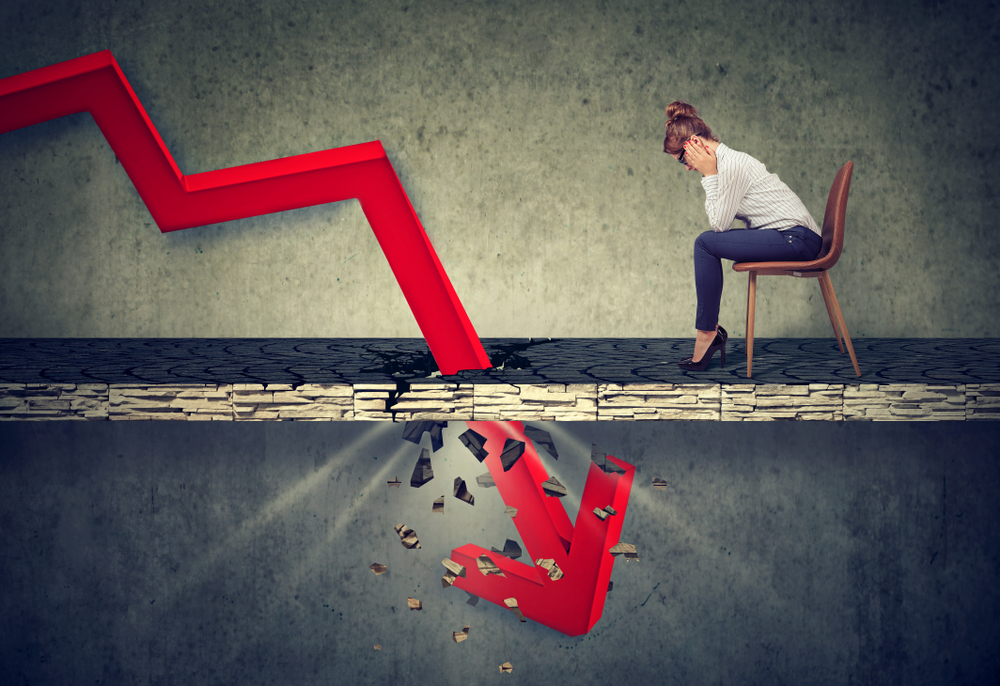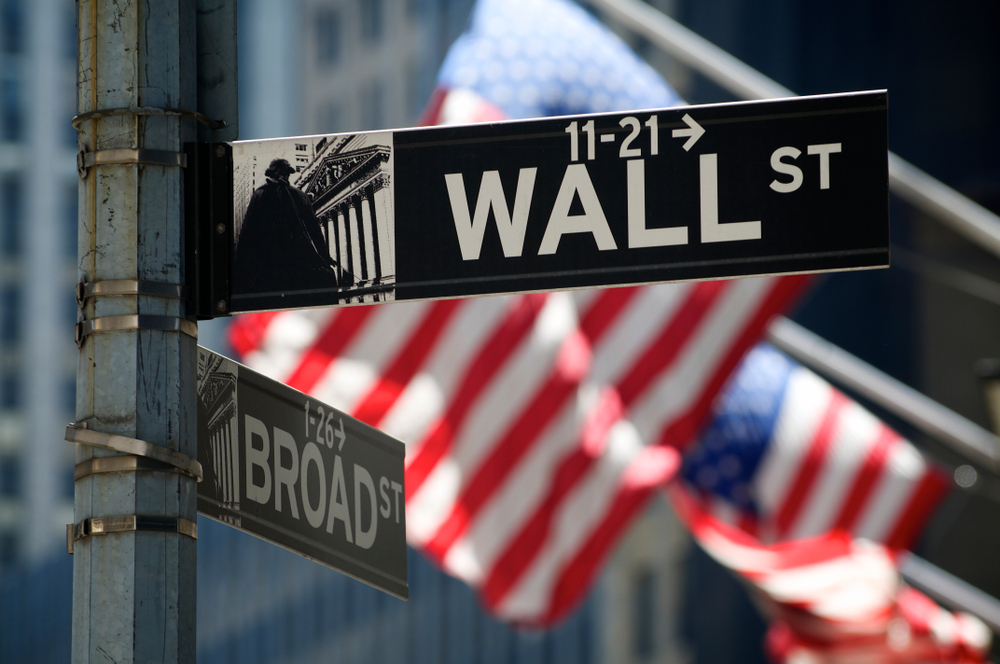The stock market has always been a place of big risks and even bigger rewards—but when things go wrong, they can go really wrong. Across history, sudden crashes have wiped out fortunes, triggered global recessions, and reshaped economies overnight. Here’s a look back at the most epic market meltdowns the world has ever seen.
1. The 2008 Financial Crisis

The 2008 financial crisis was a global economic meltdown that led to the collapse of major financial institutions and required government bailouts to stabilize the economy. Rooted in the U.S. housing market, the crisis was fueled by subprime mortgage lending and the bundling of these risky loans into complex financial products. When homeowners began defaulting on their mortgages, the entire financial system was at risk of collapse. The impact of the crisis was felt worldwide, resulting in severe recessions and increased unemployment rates.
Governments and central banks had to intervene aggressively to save the financial system, leading to unprecedented measures like quantitative easing. The crisis led to a rethinking of financial regulation, resulting in reforms such as the Dodd-Frank Act in the United States. The 2008 financial crisis remains a stark reminder of the fragile nature of financial markets and the need for vigilant oversight. The recovery was long and painful, but it also triggered significant changes in how financial markets operate.
2. The COVID-19 Crash

The COVID-19 pandemic led to one of the most rapid and severe stock market crashes in history, as global markets reacted to the uncertainty and economic disruption caused by the virus. The crash was characterized by unprecedented volatility, with major indices experiencing rapid declines in March 2020. According to the Reserve Bank of Australia, governments and central banks worldwide responded with aggressive fiscal and monetary policies to stabilize the economy and restore investor confidence. The pandemic revealed the interconnectedness of global economies and the potential for widespread disruptions from unforeseen events.
The recovery from the COVID-19 crash was swift in comparison to previous market downturns, fueled by vaccine development and economic stimulus measures. However, the pandemic’s long-term economic impacts continue to be felt, with ongoing challenges such as supply chain disruptions and inflationary pressures. The COVID-19 crash serves as a reminder of the importance of resilience and adaptability in the face of unexpected challenges. It also highlights the critical role of government intervention and global cooperation in stabilizing financial markets during times of crisis.
3. The Great Depression

The Great Depression was one of the most devastating economic downturns in history, with the stock market crash of 1929 as its igniting spark. This crash wiped out millions of investors and was fueled by factors such as over-speculation, easy credit, and a lack of regulatory oversight. In the Roaring Twenties, stock prices soared, and many believed the market would never fall. However, on October 24, 1929, known as Black Thursday, panic selling began, followed by even more catastrophic days, leading to a severe economic depression. The aftermath was brutal, with unemployment rates soaring and banks failing. The lessons learned from this crash led to significant financial reforms, including the establishment of the Securities and Exchange Commission (SEC). If you’re curious about the details, Springer Professional offers a comprehensive breakdown of the 1929 crash.
The ripple effects of the Great Depression were felt worldwide, influencing global economies and politics. It took nearly a decade and the economic boom created by World War II to fully recover. During this period, the U.S. economy faced deflation, crushed consumer confidence, and a drastic drop in international trade. Laws like the Glass-Steagall Act were introduced to prevent such a financial catastrophe from occurring again. For many historians and economists, this crash remains a pivotal moment in understanding the risks of unchecked capitalism. Its legacy is a testament to the need for a balanced approach between market freedom and regulatory oversight.
4. Black Monday

Black Monday, October 19, 1987, was a day when global stock markets tumbled, with the Dow Jones Industrial Average plunging by an astounding 22.6% in a single day. This crash was unprecedented in its speed and severity, and it took everyone from individual investors to seasoned traders by surprise. The causes of Black Monday are still debated, but many attribute it to a combination of program trading, overvaluation, and market psychology. According to The New York Times, the quick rise in interest rates and escalating geopolitical tensions also played a role.
The aftermath of Black Monday led to significant changes in how markets operate, including the introduction of circuit breakers—mechanisms designed to temporarily halt trading during extreme market declines. This crash highlighted the interconnectedness of global markets, as similar declines were seen worldwide. Interestingly, the markets recovered relatively quickly compared to other crashes, which has prompted discussions on the resilience of modern stock markets. The experience underscored the unpredictable nature of market dynamics and the importance of investor psychology. Black Monday remains a classic example of how rapid technological advancements in trading can amplify market volatility.
5. The Dot-Com Bubble

The late 1990s were a time of technological optimism, with the internet promising to change the world. Investors, eager to capitalize on this new frontier, poured money into tech startups, driving stock prices to unsustainable levels. Companies with little to no revenue were valued in the billions solely based on projected future growth. This overvaluation led to the bursting of the dot-com bubble in 2000, causing the NASDAQ to lose nearly 80% of its value over the following two years. The Guardian noted that the bursting of the bubble was a stark reminder of the dangers of speculative investing.
The collapse of the dot-com bubble led to significant losses for investors, many of whom had put their faith in the tech sector’s boundless potential. While some companies like Amazon and Google survived and eventually thrived, many others went bankrupt. The crash taught investors the importance of due diligence and the perils of following the herd mentality. It also highlighted the necessity of separating genuine innovation from hype-driven speculation. Despite the initial devastation, the lessons learned from the dot-com collapse helped shape a more mature and stable technology sector in the years that followed.
6. The Asian Financial Crisis

The Asian Financial Crisis of 1997 was a period of financial turmoil that gripped much of East Asia and Southeast Asia, beginning in Thailand with the financial collapse of the Thai baht. The crisis spread rapidly to other countries, leading to falling stock markets, devalued currencies, and a spike in private debt. Many economies in the region had experienced rapid growth, leading to speculative investment and excessive borrowing, which became unsustainable. As foreign investors withdrew, currencies collapsed, and countries were forced to seek help from the International Monetary Fund (IMF).
The crisis exposed the vulnerabilities in the economic systems of the affected countries and led to significant economic reforms and restructuring. Thailand, Indonesia, and South Korea were among the most affected, experiencing severe recessions and social unrest. The recovery was challenging, but it also laid the foundation for more resilient economies. The crisis highlighted the interconnectedness of global markets and the potential for rapid contagion, reinforcing the importance of sound economic policies and regulatory oversight.
7. The Oil Crisis Of 1973

The Oil Crisis of 1973 was a pivotal moment in history when the Organization of Arab Petroleum Exporting Countries (OAPEC) declared an oil embargo, causing the price of oil to skyrocket. The embargo was a response to the U.S. support for Israel during the Yom Kippur War, aiming to use oil as a political weapon. The sudden surge in oil prices had a significant impact on global economies, leading to inflation, recession, and a severe stock market downturn. Countries heavily dependent on oil imports, like the United States and European nations, were hit the hardest.
The crisis prompted a shift towards energy conservation and the exploration of alternative energy sources. It also led to changes in foreign policies and a reevaluation of energy security strategies. The Oil Crisis of 1973 underscored the geopolitical nature of energy markets and the potential for economic disruptions. While the embargo was eventually lifted, its effects were long-lasting, influencing economic policies and international relations for years to come.
8. The 1907 Financial Chaos In The U.S.

The Panic of 1907 was a financial crisis that gripped the United States, triggered by the collapse of the Knickerbocker Trust Company. A lack of confidence in banks led to widespread panic, resulting in bank runs and a severe liquidity crisis. The crisis was exacerbated by a lack of a central banking system, leaving the economy vulnerable to market shocks. Wealthy financiers, including J.P. Morgan, intervened to stabilize the financial system, preventing a more severe economic collapse.
The Panic of 1907 highlighted the need for a central bank to act as a lender of last resort, leading to the creation of the Federal Reserve System in 1913. The crisis underscored the importance of financial stability and the role of government and private sector collaboration in averting economic disasters. It also demonstrated the impact of public perception and trust in financial institutions. The Panic of 1907 remains a defining moment in American financial history, shaping the future of banking and economic policy.
9. The Russian Financial Crisis Of 1998

The Russian Financial Crisis of 1998 was a pivotal moment for the post-Soviet economy, marked by a massive devaluation of the ruble and a default on government debt. A combination of falling oil prices, a declining economy, and an overreliance on short-term loans triggered the crisis. As the crisis unfolded, the Russian government was forced to devalue the ruble, leading to inflation and economic hardship for the population. Foreign investors quickly withdrew their investments, exacerbating the financial turmoil.
The crisis had a significant impact on global financial markets, causing losses for investors worldwide. It also led to political changes in Russia, with a renewed focus on economic reforms and diversification. The lessons learned from the Russian Financial Crisis of 1998 have had lasting implications for the country’s economic policies. It highlighted the vulnerabilities of emerging markets and the need for prudent economic management.
10. The South Sea Bubble

The South Sea Bubble of 1720 was one of the earliest recorded financial bubbles, centered around the South Sea Company, which was granted a monopoly on trade with South America. Investors were caught up in a frenzy of speculation, driving the company’s stock price to astronomical heights. However, the company’s actual prospects were far less promising, and when reality set in, the bubble burst. The crash led to financial ruin for many investors and had far-reaching economic consequences in Britain.
The South Sea Bubble highlighted the dangers of speculative investing and the potential for financial manipulation. It also led to increased scrutiny and regulatory measures to prevent similar occurrences in the future. The crash remains a cautionary tale of investor greed and the importance of due diligence. It’s a story that resonates even today, reminding us of the timeless nature of financial market risks.
11. The Tulip Mania

The Tulip Mania of the 1630s is often cited as the first recorded speculative bubble, centered around the buying and selling of tulip bulbs in the Netherlands. As demand for rare and exotic tulip varieties soared, prices reached extraordinary levels, with some bulbs reportedly worth more than a house. This frenzy of speculation was unsustainable, and when prices began to fall, the market collapsed. The Tulip Mania serves as an early example of how market psychology and irrational exuberance can drive asset prices to unsupportable heights.
Although often romanticized, the Tulip Mania had real economic impacts, leading to financial losses for those who bought at the peak. It remains a symbol of the dangers of speculative investing and the herd mentality that can drive markets into a frenzy. The story of Tulip Mania is a timeless cautionary tale, illustrating the potential pitfalls of investing based on emotion rather than fundamentals. It continues to be a point of reference in discussions about financial bubbles and market behavior.
12. The Economic Panic Of 1837

The Panic of 1837 was a financial crisis in the United States triggered by speculative lending practices, a collapse in land prices, and restrictive monetary policies. The crisis was preceded by a period of economic expansion, fueled by easy credit and land speculation. However, when the federal government issued the Specie Circular, requiring land payments in gold and silver, the bubble burst. The resulting financial panic led to widespread bank failures and an economic depression that lasted for several years.
The Panic of 1837 highlighted the vulnerabilities of an economy reliant on speculative investments and inadequate regulatory oversight. It underscored the need for sound monetary policies and financial stability to support sustainable economic growth. The crash had significant political and social consequences, influencing economic policy and government intervention in the economy. It remains a historical example of how speculative bubbles can lead to economic downturns.
This article is for informational purposes only and should not be construed as financial advice. Consult a financial professional before making investment or other financial decisions. The author and publisher make no warranties of any kind.








